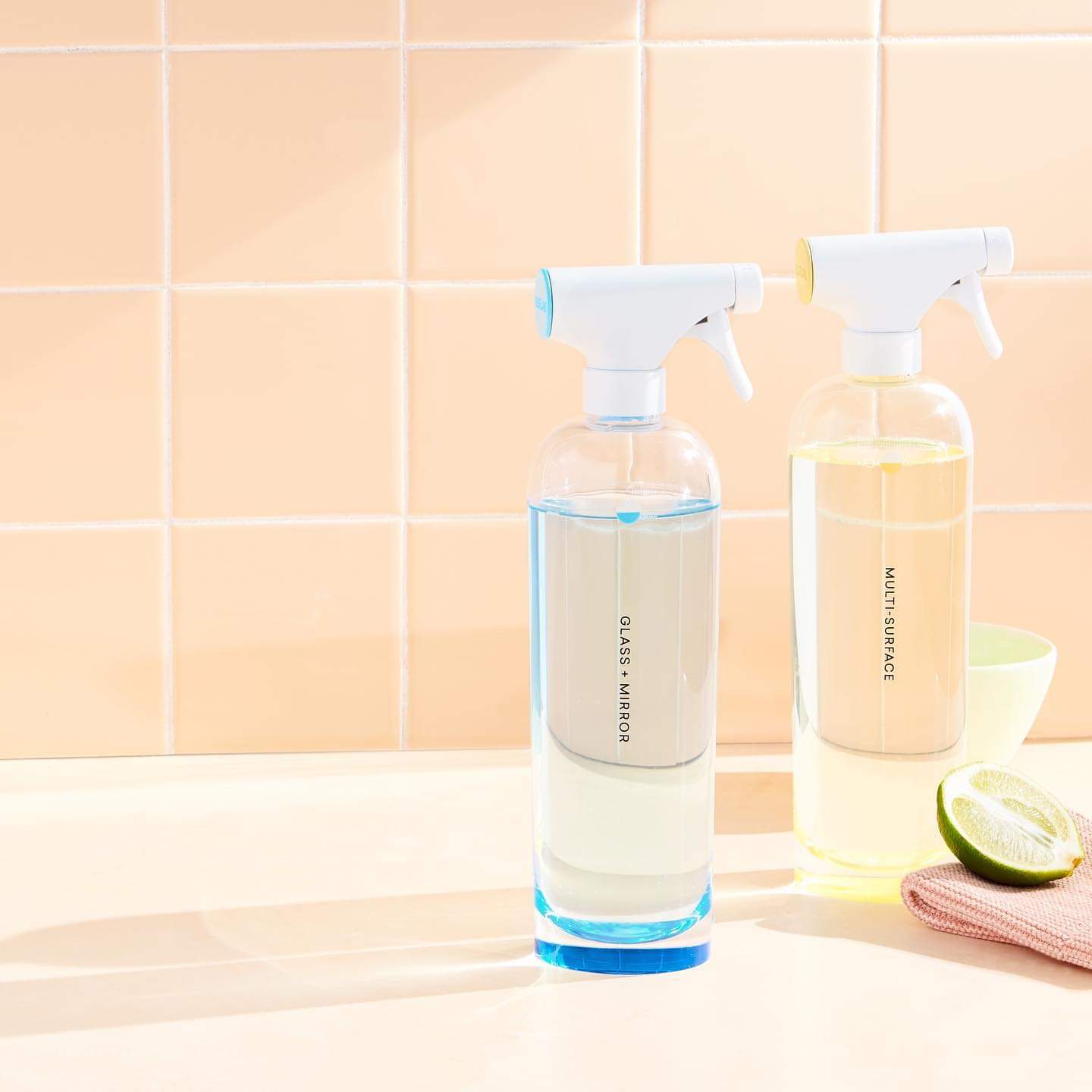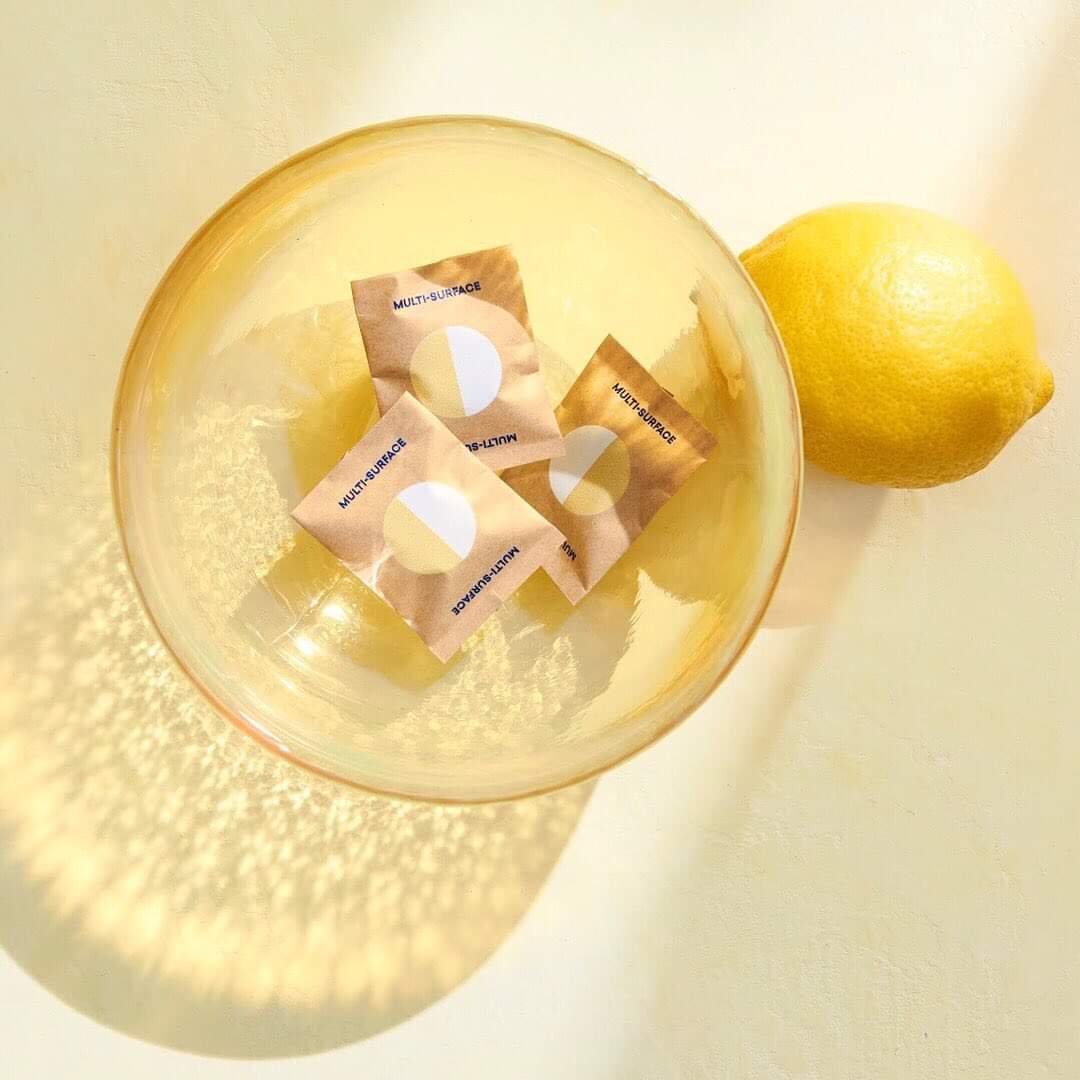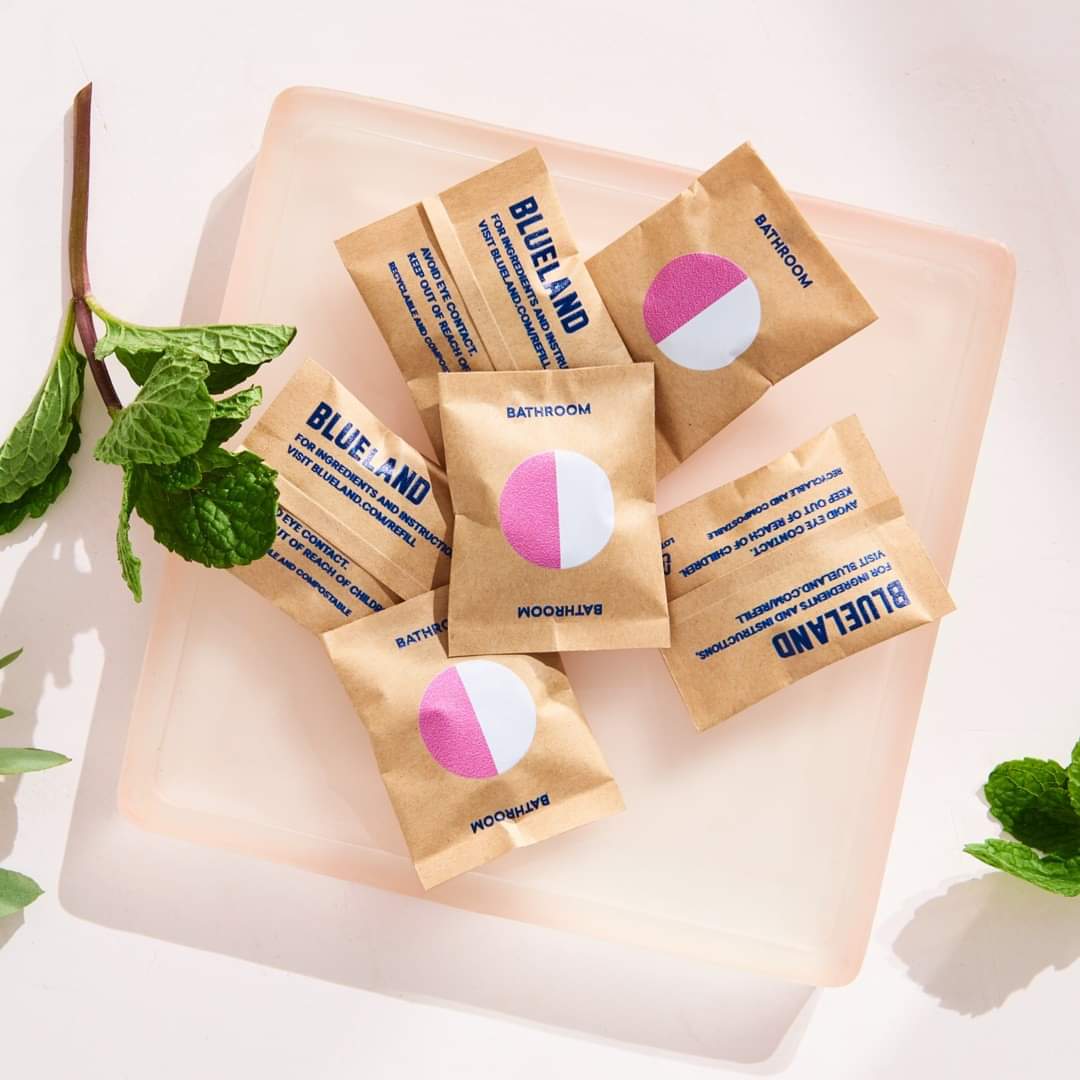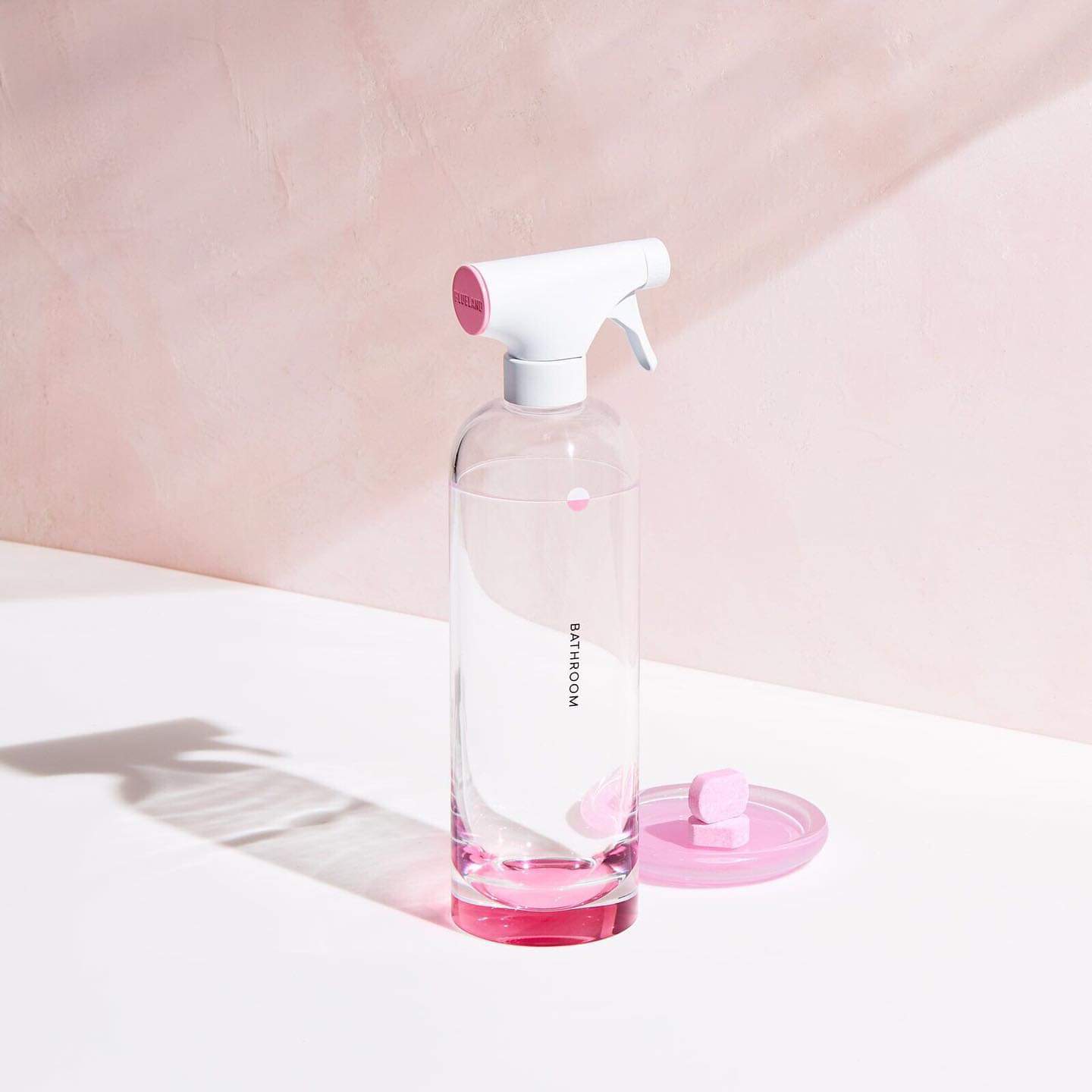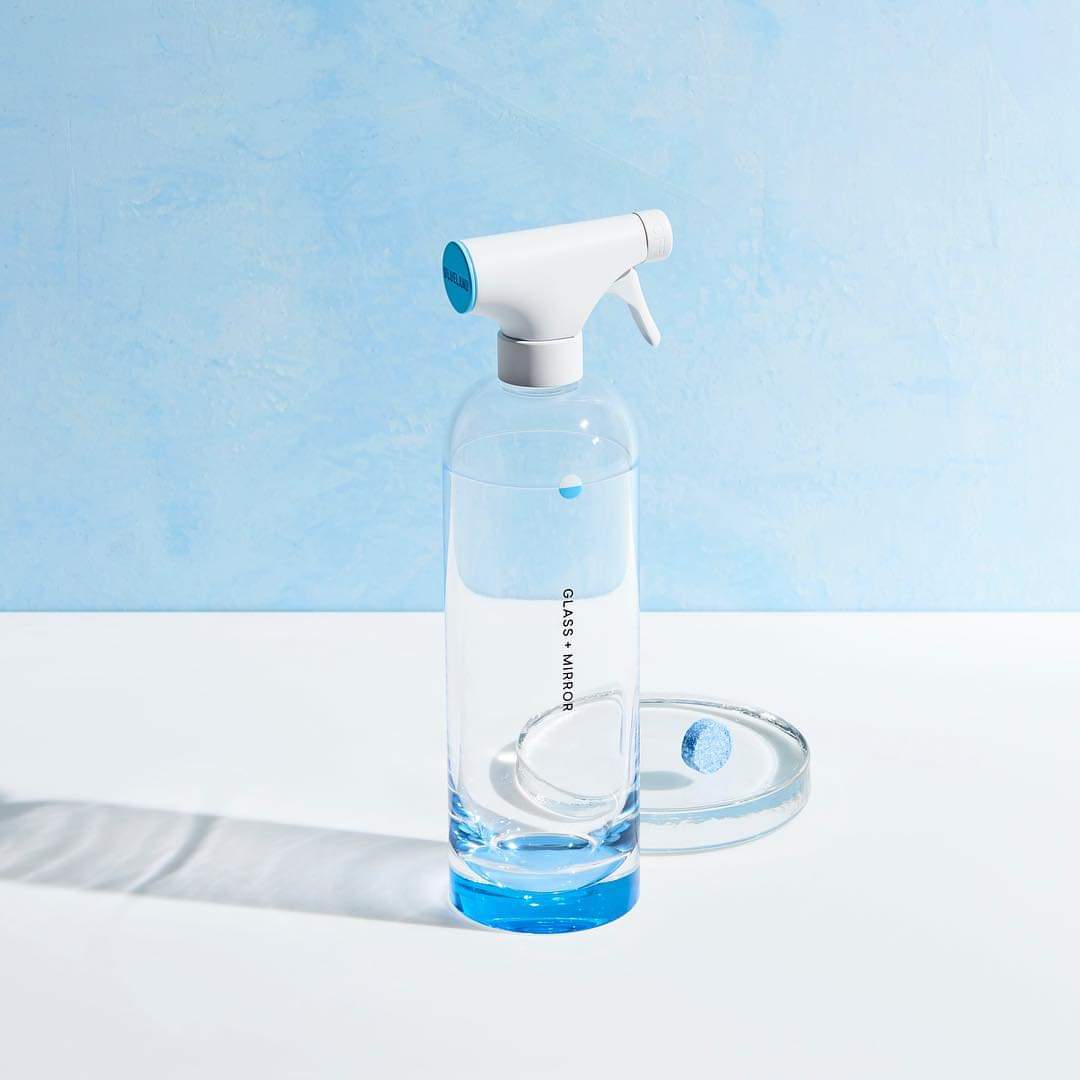
- Sustainable Planet -
- 4mins -
- 352 views
These dissolvable tablets could help save 100 billion plastic bottles from being thrown away
Blueland’s cleaners — a bathroom cleaner, glass cleaner, and multi-purpose cleaner — are sold as tablets that customers add to the cleaning containers the company provides.
Blueland: Making Single-Use Plastics a Thing of the Past
Blueland is a company aiming to be the future of cleaning and personal care, with the intention to eliminate the need for single-use plastic packaging. The company recently introduced their first product, The Clean Up Kit ($29), a household cleaning box which includes a Multi-Surface, Glass+Mirror and Bathroom cleaner with a surprisingly easy way to reduce single use plastic containers. Just add water and a tablet or two to a Blueland Forever Bottle, and within a few minutes, customers have a patent-pending cleaning solution.
Reimagining everyday products to save you money and space, without any plastic waste
If you take a quick look through the products under your sink; multi-purpose spray, glass cleaner, washing up liquid, they all have one thing in common: Water is their main ingredient.
In the past, few consumers thought this was a problem. But as a growing number of people become increasingly aware of both climate change and plastic pollution, the environmental impact of everyday products such as these is becoming difficult to ignore.
Now, a new direct-to-consumer e-commerce brand called Blueland launches with a set of cleaning products that come in the form of small tablets, which the customer mixes with water at home.
Blueland is debuting with a $29 starter kit that comes with three acrylic spray bottles that are designed to last forever, along with three tablets that you mix with water to create multi-surface, bathroom, and window cleaners. When you need a refill, you simply order new tablets, which cost $2 a time. Over the next few months, the startup say they will release other sustainable cleaning and personal care products.
Source: Forbes

The challenges Blueland faced
You could be forgiven for thinking it would be easy to compress a liquid into a small tablet that would dissolve in water, but it turns out it’s not. Sarah Paiji, Blueland’s founder, has spent the last two years on continuous R&D to create Blueland’s tablets.
The first step was developing the formula. Blueland has a lab in Montana where scientists have been working to ensure the tablet version of the cleaning product is just as effective as the liquid version. This is no small feat. Many ingredients in cleaning products do not come in solid form.
Take fragrances: Both essential oils and synthetic fragrances mostly come in liquid form, so it was hard to compress them. In the end, the lab found a way to encapsulate the fragrance in silica. “When it’s exposed to water, it blossoms, and releases the fragrance,” explains Paiji.
Then there was the issue of contaminants. Paiji believed it was important for consumers to be able to use tap water, rather than filtered or bottled water, to make the process as easy as possible. But tap water quality varies across the country, and contamination may also happen when the customer adds water to the bottle.
It was therefore crucial for the tablet formula to have a preservative in it that would eliminate any bacterial growth. “As you can imagine, if there’s bacteria in the water and it sits in a bottle for two years, things will grow,” she says. “We wanted to have a 100% foolproof method in place, so we had to develop a unique preservative method.”
In the end, Paiji and her team believe they nailed the formula, which currently has 12 patents pending. In several studies led by the EPA, the Blueland sprays outperformed top brands Windex and Method, clearing out more dirt and streaks with each wipe than these competitors.
Then there was the question of manufacturing the tablets. Since this is a relatively new approach to cleaning products, Paiji scoured the market for a supplier, visiting 50 manufacturers that tabletise products, ranging from laundry detergents to medication, before finding the right fit. “We had to get creative,” she says. “We even visited a candy factory.”
Finally, Paiji had to work on creating the bottle that would come in the starter pack, another major challenge.
After doing a lot of consumer research, Paiji discovered that many customers (particularly mothers) did not want a glass bottle because it was breakable. Aluminum was also out because many consumers wanted to actually see the tablet fizzing in the bottle and see the final liquid.
Paiji finally settled on acrylic, a clear plastic that is fully recyclable. They created the first bottle certified platinum by Cradle to Cradle, which tracks the reusability of products, as well as their carbon and water footprints. “We needed these bottles to be infinitely reusable,” she says. “But we also wanted to drive mass adoption, because that is how we can truly maximise sustainability.”
Source: FastCompany
